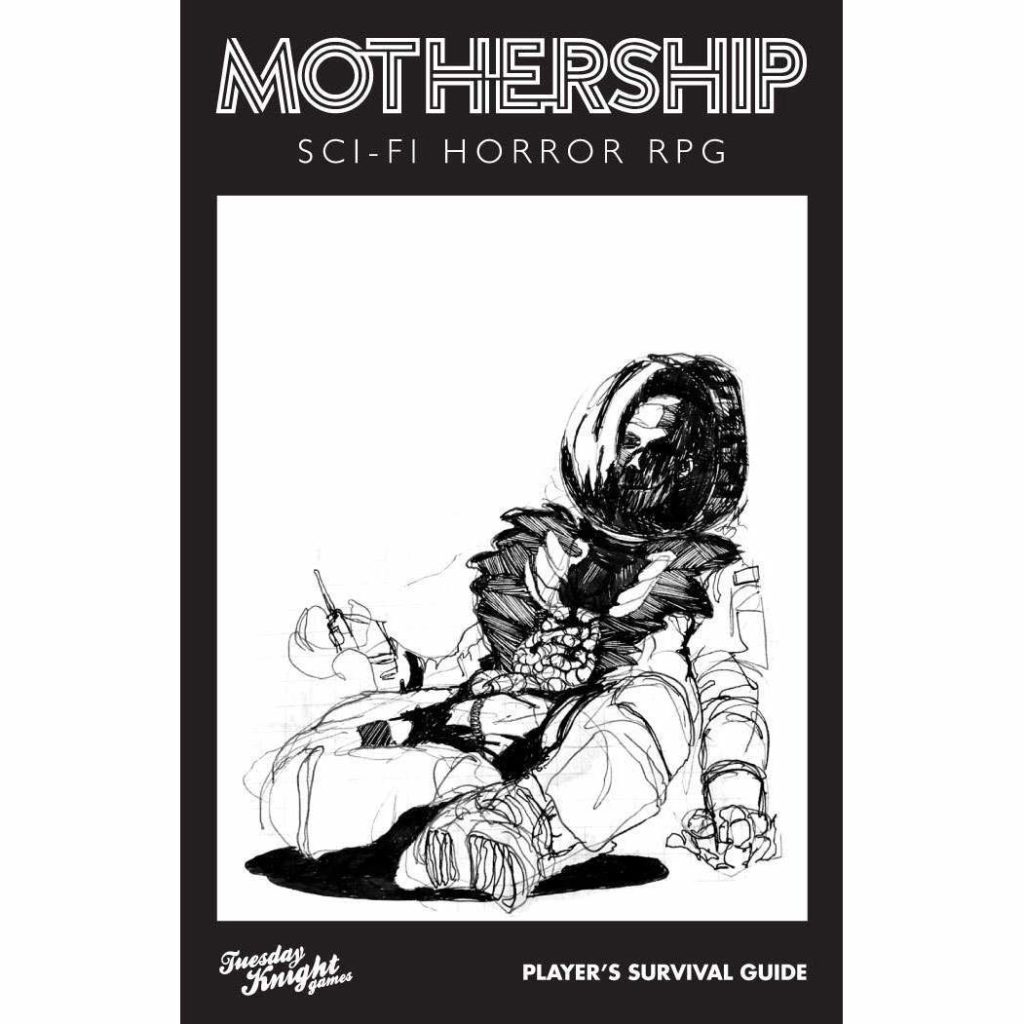I’m on a study project to improve my understanding of roleplaying games. To this end, I already have two reading projects, A Game Per Year and An Adventure Per Year. This is the third, with the goal of reading or playing 52 games made this year or last year. Originally I considered making this “A New RPG Per Week” and that’s where the number 52 comes from, even though a weekly schedule is probably not within my abilities.

Mothership is a lean scifi roleplaying game published in a zine format. It’s extremely bare bones, containing nothing beyond a tight package of rules for claustrophobic space horror adventures.
The genre Mothership aims for is where a team is stuck on a spaceship when things start to go wrong. Alien and it’s sequels is the paradigm-defining example.
In terms of style, Mothership is an OSR game, with mechanics that limit themselves to character stats, combat, spaceship design and hiring mercenaries. It’s most obvious precursor is Traveller which echoes in the spaceship construction rules.
Mothership is definitely not a beginner’s roleplaying game. It’s a ruleset and you have to know what do with it. There’s no example adventure or setting beyond small hints offered in the rules text. In this case, that may be appropriate because the types of stories Mothership hearkens back to are often about the immediate circumstance rather than intricately defined scifi worlds.
The game works best when you’re an experienced roleplayer and who know what kind of a game you want. If it’s a claustrophobic scifi space ship game, you can use Mothership for that purpose. It represents the idea of a roleplaying game as a tool to facilitate your own creation.
As a small detail, in Mothership marines are prone to causing havoc when they panic. This is entirely in line with Mothership’s genre touchstones but goes against the grain in roleplaying games where combat character types are often designed to fulfill fantasies of macho competence.
Another fun detail is the skill tree in which simple skills lead to more complex ones. It resembles the research tree in Civilization and hints at the possibilities of even more complex design.
One area where Mothership shines is visual design. This goes beyond just layout and into how the character sheets, tables and other game aids are done. The character sheets contain the necessary details for making new characters so if a character dies the GM (or Warden, to use the game’s term) can just hand them a sheet and they can take it from there.